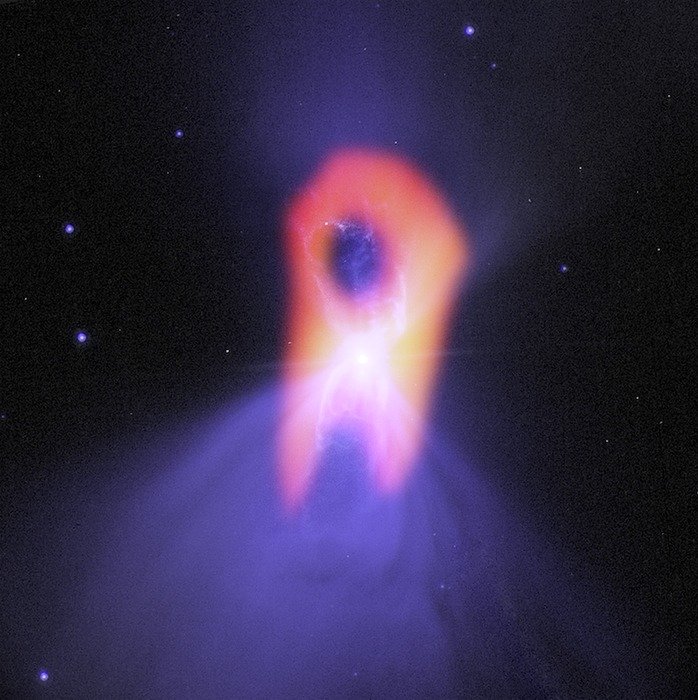The Boomerang Nebula reveals its true shape with ALMA. The background blue structure, as seen in visible light with the Hubble Space Telescope, shows a classic double-lobe shape. ALMA reveals the nebula’s more elongated shape, as seen in red. Credit: Bill Saxton; NRAO/AUI/NSF; NASA/Hubble; Raghvendra Sahai
PASADENA, Calif., Oct. 25 (UPI) -- Astronomers say they've used a radio telescope array in Chile to study a cosmic curiosity known as the Boomerang Nebula, the coldest object in the universe.
The nebula is colder than even the faint afterglow of the Big Bang, the natural background temperature of space, they said.
The Atacama Large Millimeter/submillimeter Array telescope has provided a new look at this strange object to learn more about its frigid properties and to determine its true shape, which has an eerily ghost-like appearance, astronomers said.
"This ultra-cold object is extremely intriguing and we're learning much more about its true nature with ALMA," study lead author Raghvendra Sahai at NASA's Jet Propulsion Laboratory in Pasadena, Calif., said.
The nebula's appearance is that of a lopsided bow tie, which is how it got its name, but scientists say the ALMA observations suggest the twin lobes seen in telescope images may actually be a trick of the light as seen at visible wavelengths.
"What seemed like a double lobe, or 'boomerang' shape, from Earth-based optical telescopes is actually a much broader structure that is expanding rapidly into space," Sahai said.
The Boomerang is a pre-planetary nebula, a star approaching the end stage of its life, and the outflow of gas from this particular star is expanding rapidly and cooling itself in the process, in much the same way a refrigerator creates cold temperatures by rapidly expending a refrigerant gas, the scientists said.
The result is a temperature of one degree Kelvin -- minus 458 degrees Fahrenheit -- making the Boomerang Nebula the coldest known object in the universe.















